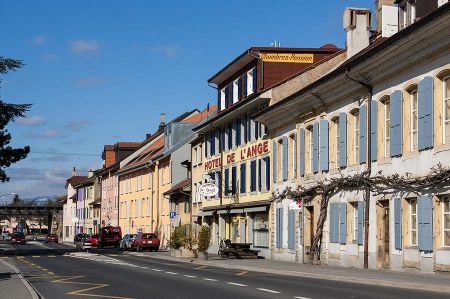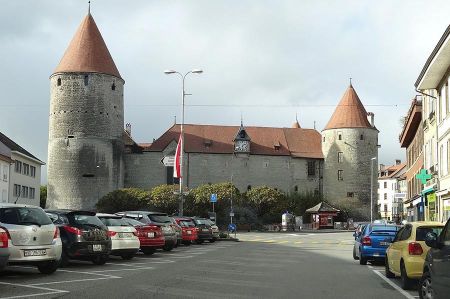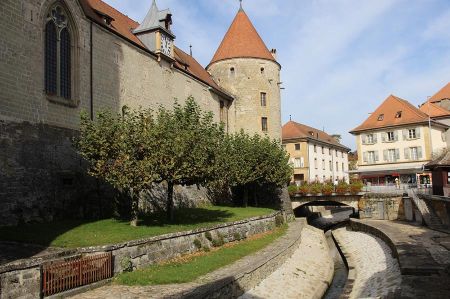Yverdon-les-Bains – holiday region on Lake Neuchâtel
- Written by Portal Editor
During our several-day stay at a campsite near Avenches and after the strenuous camping fair in Bern, we also circled Lake Neuchâtel and came across the primeval menhirs, which we have already reported on.
It goes without saying that the Romans also played a crucial role in a history spanning over 6,000 years, especially since Yverdon was already known for its thermal springs back then. Thanks to its sulphur and magnesium springs, Yverdon-les-Bains has a long tradition as a thermal health resort and centre of healing arts, as evidenced by the ruins of Roman thermal baths. Today, the modern thermal baths of Yverdon-les-Bains combine the beneficial properties of sulphur water with modern bathing facilities that were completely renovated a few years ago and an attached four-star hotel.
Old town between the Thielle and the Canal Oriental

The approximately oval city floor plan, approximately 300 m long and 200 m wide, has a main street as its longitudinal axis, south of which there are two further longitudinal streets and several cross alleys, almost reminiscent of the founding of a Roman city.

Since then, it has undergone numerous redesigns and restorations, especially in the residential wings. The city museum, founded in 1763, is located in the castle. Celtic artefacts, Roman boats and a sarcophagus containing the Ptolemaic mummy of Nesshou are on display here. In the Musée Suisse de la Mode, which is also located in the castle, textile treasures from the era between 1850 and 1960 are on display.
Also on Pestalozzi Square is the reformed church of Notre-Dame, which was built between 1753 and 1757 on the site of a previous Gothic building.
On the south side of the square, the Hôtel de ville (town hall) was built from 1767 to 1773 on the site of the former granary. It has a facade with a pilaster projection and triangular gable. Exhibitions on various topics take place here all year round. The Préfecture, the former Hôtel de l’Aigle, from 1776 also dates from the so-called Belle Epoque.
The Pestalozzi Monument from 1889 stands on Pestalozzi Square.
The two towns of Grandson and Romainmôtier were named two of the twelve most beautiful villages in Switzerland. Romainmôtier is dominated by its abbey church, which is one of the oldest Romanesque churches in the country and was built around the year 1000.
The southern shore of Lake Neuchâtel is a nature reserve
The largest stalactite caves in Switzerland can be found near Vallorbe, which experts consider to be among the most beautiful caves in all of Europe. The highlight is the 30 m high hall, also called the cathedral, in the middle of the mountain. Thanks to a special lighting concept, a unique atmosphere is created in the caves. The mineral collection, which shows 250 specimens from all over the world, is also worth seeing.
Please read as well:
